CP30683E: Statistical Analysis and Memory Utilisation in Computing
VerifiedAdded on 2023/06/12
|7
|1013
|331
Homework Assignment
AI Summary
This assignment focuses on statistical analysis and memory utilization within a computing context. Task one involves creating frequency distribution tables, calculating percentage and cumulative frequencies, drawing frequency polygons, and using Microsoft Excel to determine mode, median, mean, and standard deviation for two datasets. The standard deviation is also calculated manually using a formula and then converted from Microfarads to Farads. The task concludes with a commentary on the effects of replacing capacitors in a system with a uniform capacitance value. Task two centers on memory utilization by various services on a node server, including calculating total memory used in MB and GB, determining the percentage of memory utilized by each service, calculating the percentage of unused memory, creating a chart to illustrate memory usage, working out memory usage ratios between different services, converting memory allocations to MB in standard form, and calculating the new total memory available after a 25% upgrade.
1 out of 7
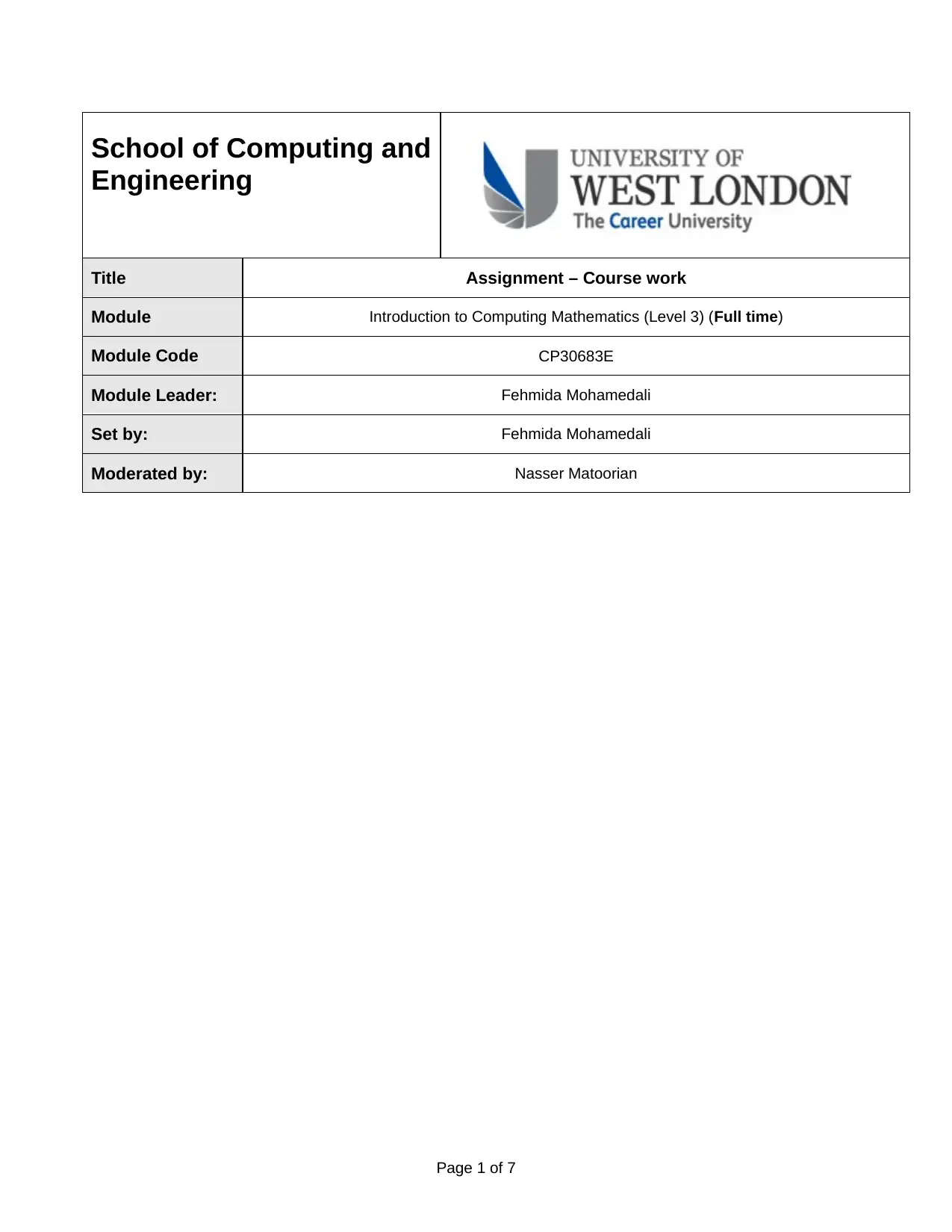
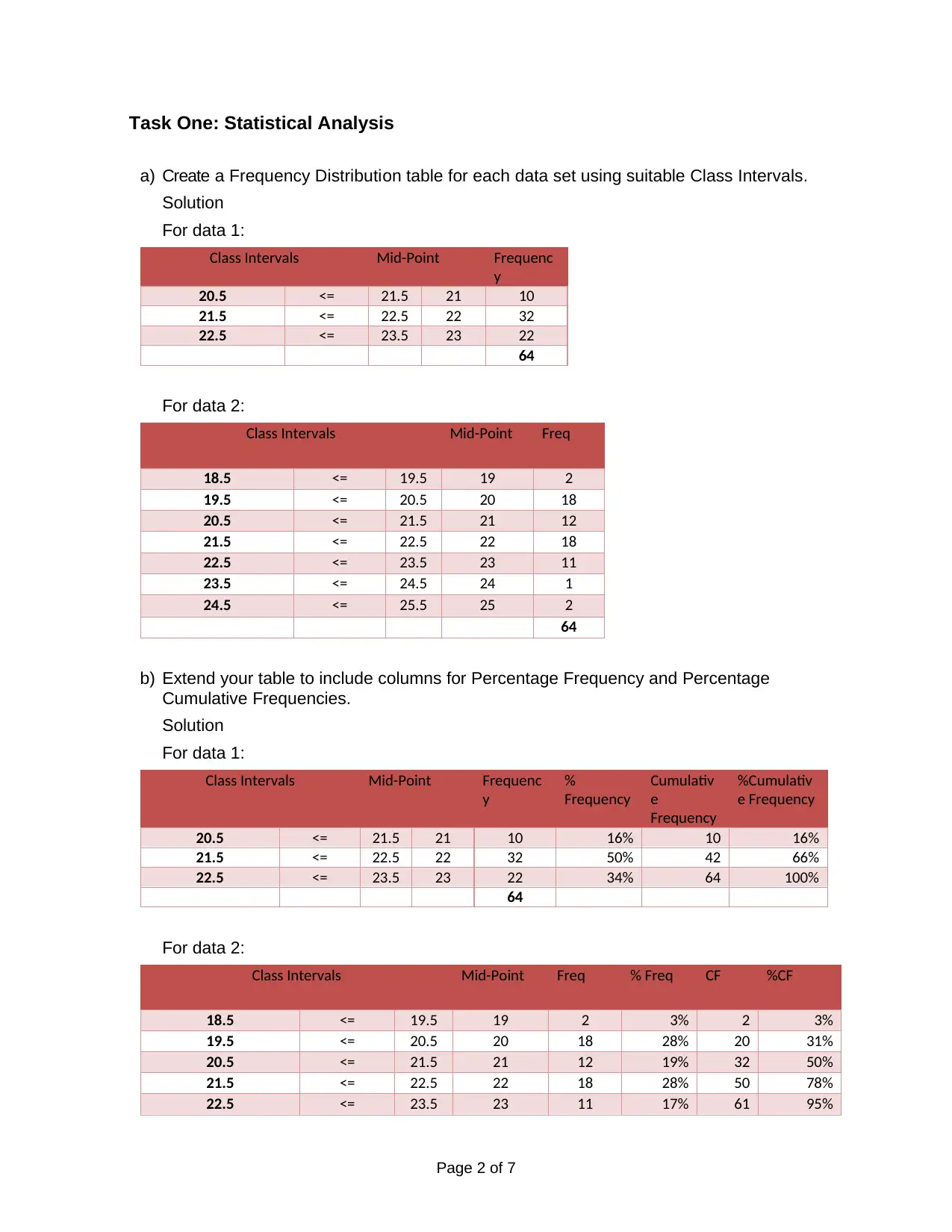
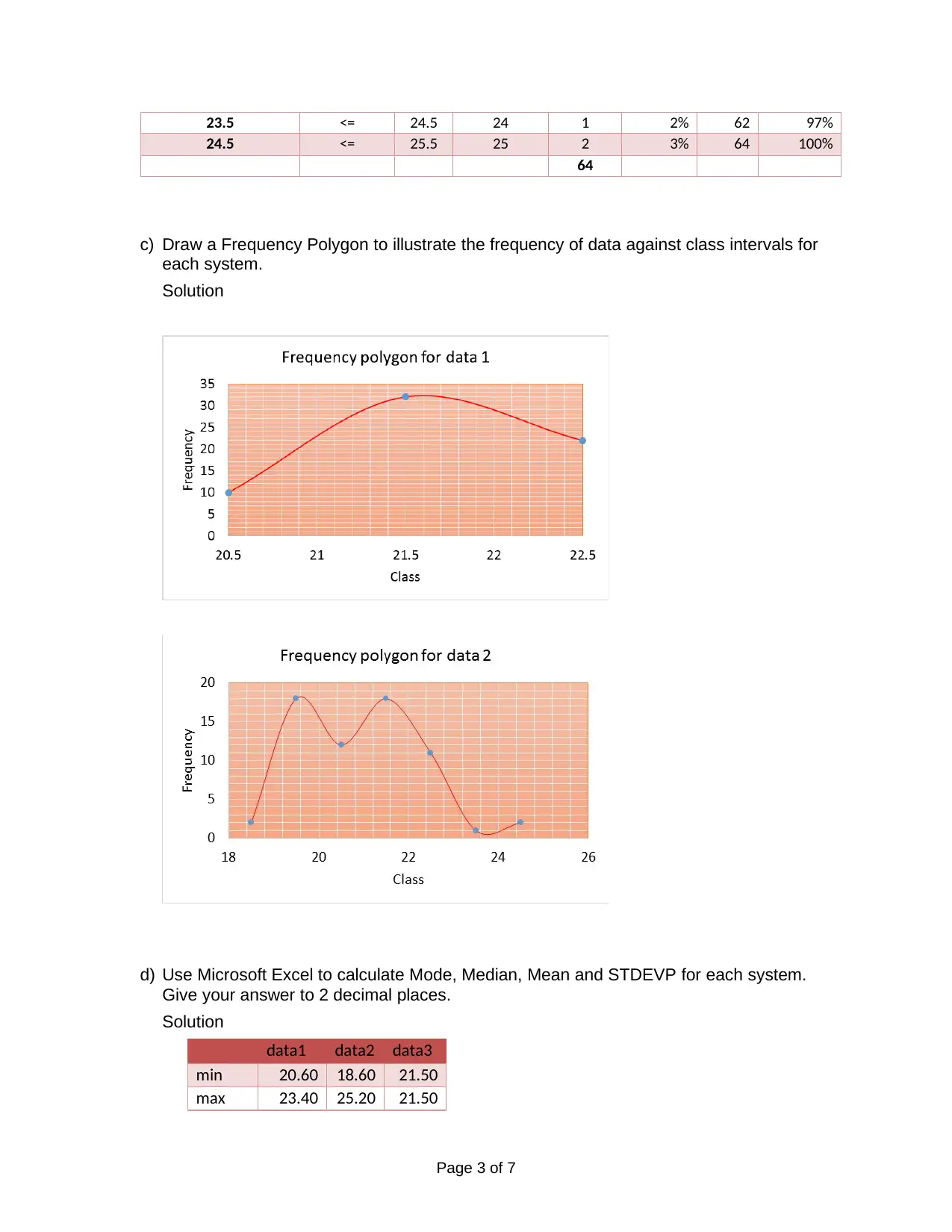

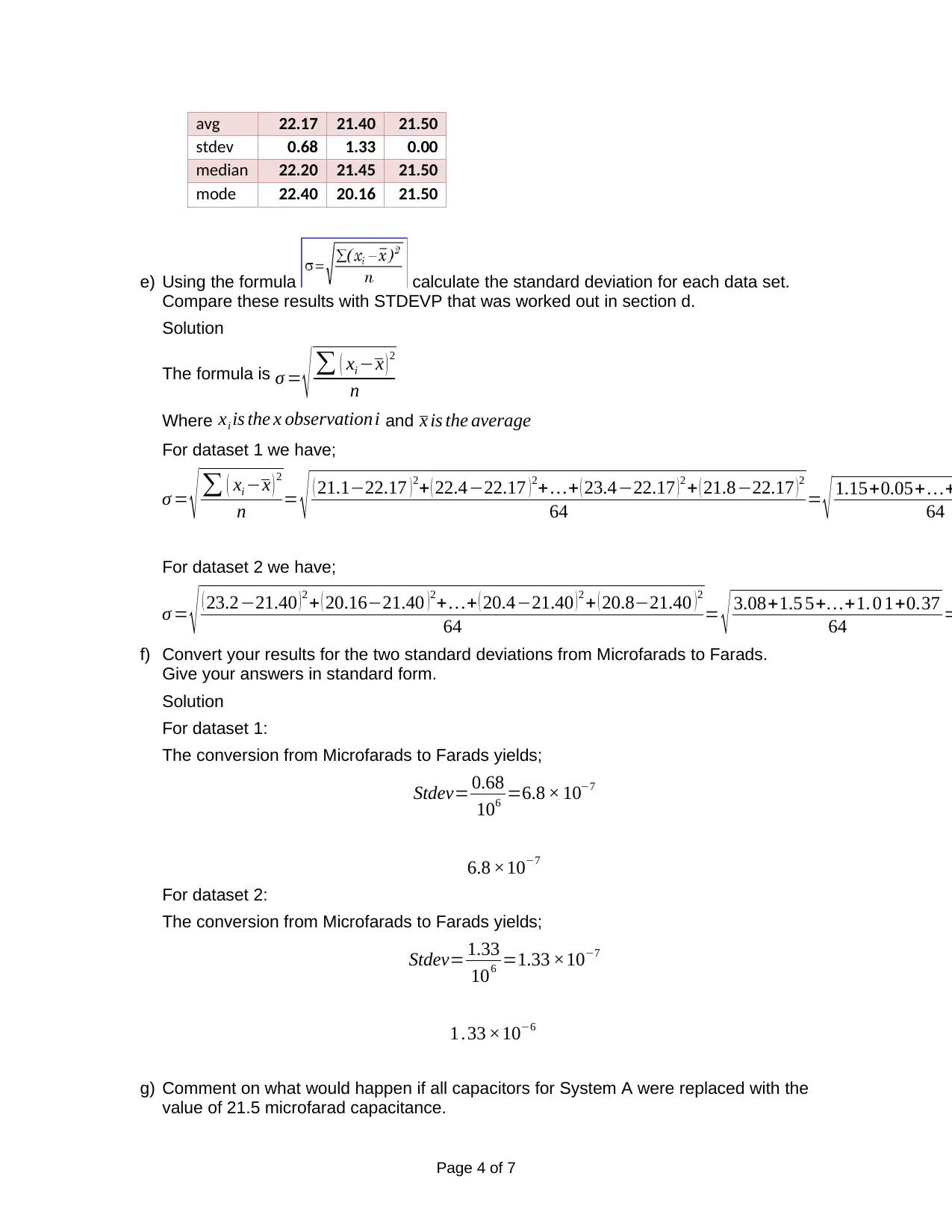
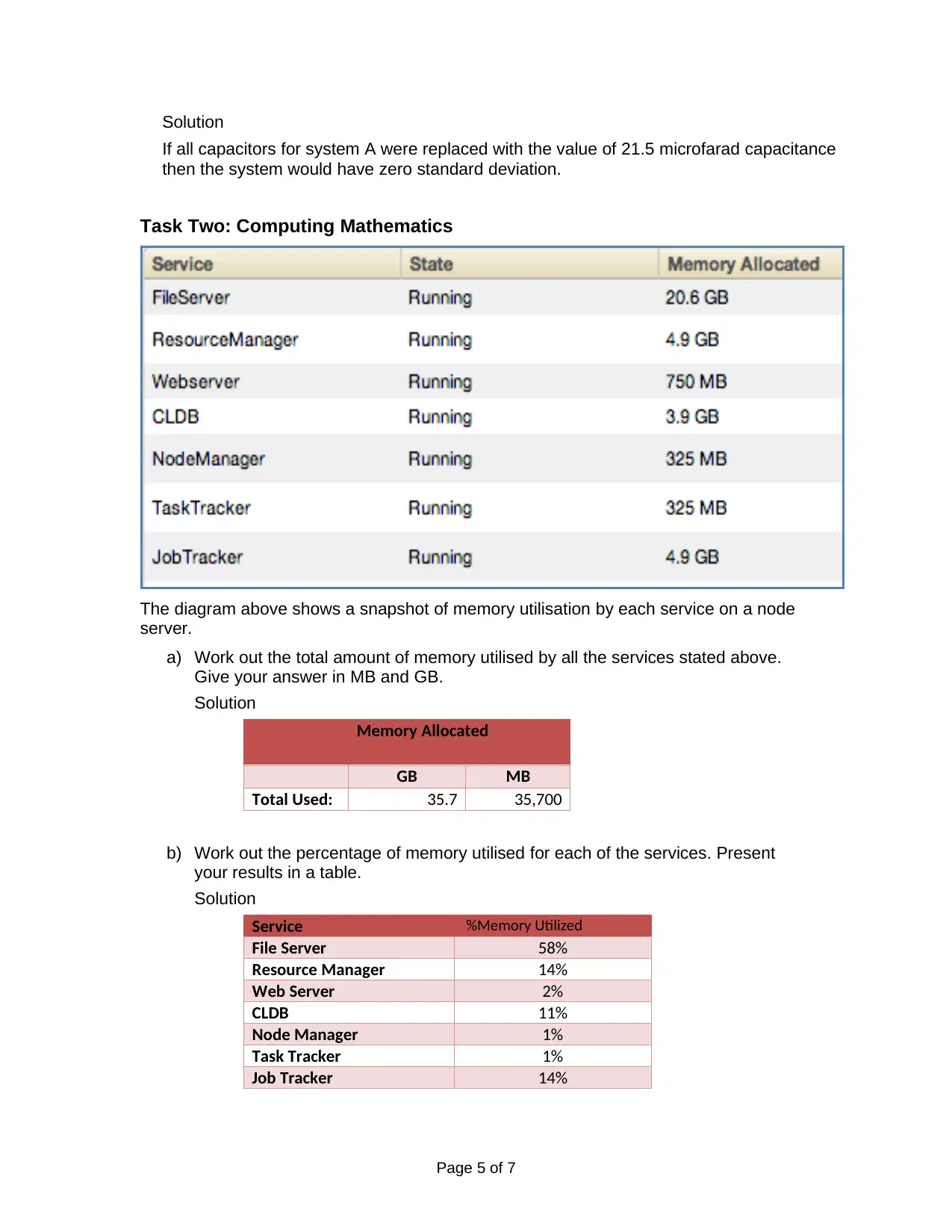

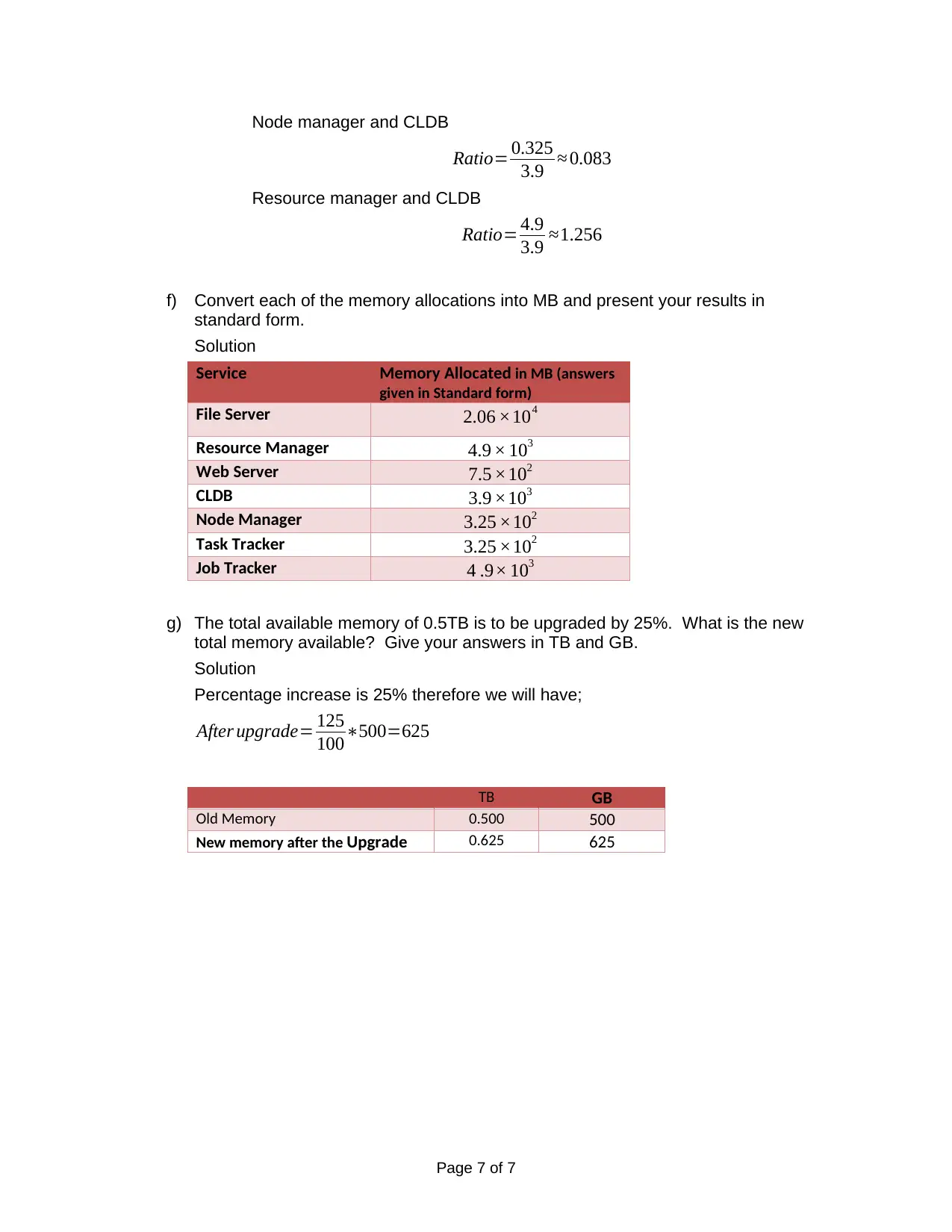
![[object Object]](/_next/static/media/star-bottom.7253800d.svg)